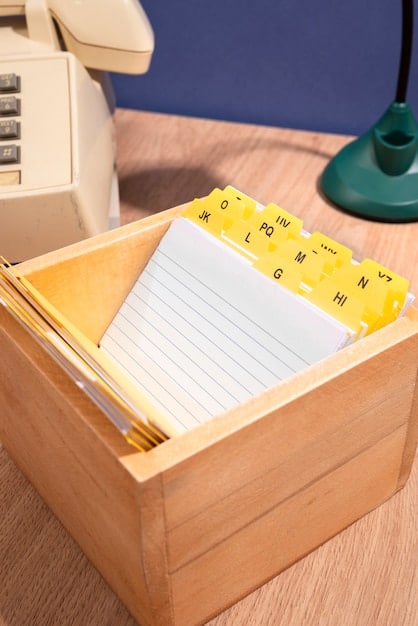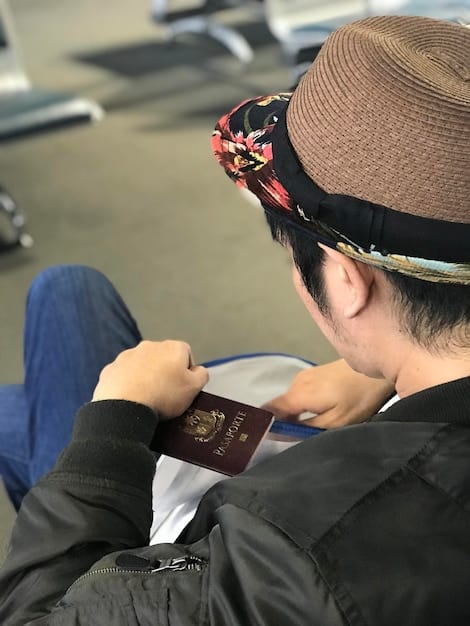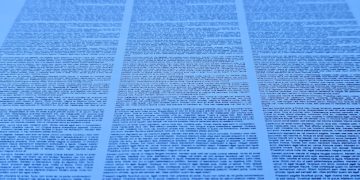The Ultimate Checklist: Ensure Your Application Includes All Required Documents for Faster Approval

The ultimate checklist to ensure your application includes all required documents for faster approval involves gathering personal identification, financial statements, proof of residency, educational transcripts, and any specific forms or supporting documents outlined by the receiving institution or organization.
Ensure your application process is smooth and efficient by using the ultimate checklist: ensure your application includes all required documents for faster approval. Having all the necessary paperwork ready not only speeds up the approval but also increases your chances of success.
Understanding the Importance of a Complete Application
Submitting a complete application is crucial for several reasons. It demonstrates your attention to detail, reduces processing times, and minimizes the chances of rejection due to missing information. A comprehensive approach ensures that all necessary data is available for review.
Why a Complete Application Matters
A complete application package shows that you are organized, prepared, and serious about your application. This positive impression can influence the reviewer’s perception.
The Impact on Processing Time
Incomplete applications often require follow-up, causing delays. Providing all required documents upfront can significantly reduce processing time.

Missing documents can lead to unnecessary back-and-forth communication, potentially delaying the outcome of your application. Being thorough helps to expedite the entire process.
- Demonstrates attention to detail.
- Reduces processing delays.
- Minimizes follow-up requests.
Incomplete applications may be deprioritized or even rejected outright. Providing all required documents from the start ensures fair and timely consideration.
Identifying Required Documents: Your First Step
The first step in ensuring a complete application is identifying all the required documents. Carefully review the application guidelines and any supporting materials provided by the institution or organization.
Where to Find the List of Required Documents
Look for a checklist or detailed instructions on the application website or in the application packet. These resources usually specify exactly what is needed.
Understanding Different Types of Documents
Documents can range from personal identification and academic transcripts to financial statements and letters of recommendation. Understanding each type is essential.
Each document serves a specific purpose in the application process, providing crucial information about your qualifications, background, and suitability for the program or opportunity.
- Check the application website.
- Review application packets thoroughly.
- Consult application guidelines.
Gathering the required documents is not just about collecting pieces of paper; it’s about comprehensively showcasing your qualifications and increasing your chances of acceptance.
Personal Identification: What You Need
Personal identification documents are fundamental to any application. These documents verify your identity and legal status. Common examples include passports, driver’s licenses, and birth certificates.
Acceptable Forms of ID
Always refer to the application guidelines for acceptable forms of identification. Some applications may require specific types of ID, such as a valid passport.
Ensuring Your ID is Valid and Current
Make sure your identification documents are valid and current. Expired IDs are generally not accepted and can cause delays or rejection.

Provide front and back copies if required and ensure that your name matches across all documents to avoid discrepancies. Consistency is key to verifying your identity.
- Passport
- Driver’s License
- Birth Certificate
Submitting a valid and correct personal identification document is a critical part of the application process. Verify that all details match and are up to date to prevent any issues.
Educational Transcripts and Certificates
Educational transcripts and certificates are essential for verifying your academic background and qualifications. These documents provide a comprehensive record of your education.
Obtaining Official Transcripts
Official transcripts must be obtained directly from the educational institution. Unofficial copies are usually not accepted for formal applications.
Understanding Different Types of Academic Documents
Depending on the application, you may need high school diplomas, bachelor’s degrees, master’s degrees, or other certifications.
An academic record demonstrates your qualifications and competencies in a specific subject. These records enable admissions teams to make informed decisions.
- High School Diploma
- Bachelor’s Degree
- Master’s Degree
Gathering your educational transcripts and certificates requires planning and coordination with your previous and present academic institutions.
Financial Statements: Demonstrating Financial Stability
Financial statements are often required to demonstrate your ability to cover tuition fees, living expenses, or other costs associated with the opportunity you are applying for. These documents provide evidence of your financial stability.
Types of Financial Documents Required
Common financial documents include bank statements, tax returns, sponsorship letters, and proof of scholarships or grants.
Ensuring Accuracy and Relevance
Make sure your financial statements are accurate, up-to-date, and relevant to the application requirements. Submitting false or misleading information can lead to disqualification.
Financial documentation often requires up-to-date statements from banks, and this verifies that you will be able to pay for your education.
- Bank Statements
- Tax Returns
- Sponsorship Letters
Submitting accurate and relevant financial statements demonstrates your financial capability and responsibility.
Letters of Recommendation and References
Letters of recommendation and references provide insights into your character, skills, and qualifications from individuals who know you professionally or academically. These letters add credibility to your application.
Choosing the Right Recommenders
Select recommenders who can speak to your strengths and qualifications. Provide them with ample time to write a thoughtful and detailed letter.
Providing Recommenders with Necessary Information
Give your recommenders a copy of your resume, a brief outline of the application requirements, and any specific points you would like them to address.
Recommenders should provide specific anecdotes and examples rather than generic praise to demonstrate your capabilities.
- Choose recommenders strategically.
- Provide detailed information.
- Follow up politely.
Cultivating strong relationships with recommenders and providing them with clear guidance can significantly enhance the quality and impact of your letters of recommendation.
Additional Supporting Documents to Consider
In addition to the core documents, there may be additional supporting documents that can strengthen your application. These documents can provide further evidence of your qualifications and experiences.
Examples of Supporting Documents
These may include resumes, portfolios, essays, personal statements, and proof of awards or achievements. Tailor your supporting documents to the specific requirements of the application.
Tailoring Documents to the Application
Customize each document to highlight the experiences and skills most relevant to the position. Generic documents may not make as strong an impression.
Resumes and portfolios are considered additional resources that can strengthen your application, such as awards and achievements.
- Portfolios
- Essays
- Personal Statements
Taking the time to gather and prepare well-crafted supporting documents can give your application a competitive edge.
| Key Point | Brief Description |
|---|---|
| 🔑 Required Documents | Identify all necessary documents by checking the application guidelines. |
| 🆔 Personal Identification | Include valid passport, driver’s license, or birth certificate copies. |
| 🎓 Educational Transcripts | Provide official transcripts to verify your academic background. |
| 💼 Financial Statements | Demonstrate financial stability with bank statements and tax returns. |
Frequently Asked Questions
▼
The first step is to carefully identify all required documents by thoroughly reviewing the application guidelines and any provided checklists.
▼
Providing accurate financial statements demonstrates your ability to cover any associated costs and ensures transparency in your application process.
▼
Official transcripts can be obtained directly from your educational institution’s registrar or records department, often through an online request form.
▼
Common forms of acceptable personal identification include a valid passport, driver’s license, or birth certificate, as outlined in the application guidelines.
▼
Give recommenders your resume, a summary of the application, and any specific areas you would like them to address.
Conclusion
Ensuring that your application includes all required documents is a critical step towards success. By taking the time to thoroughly review the checklist, gather the necessary paperwork, and double-check for accuracy, you can significantly increase your chances of a positive outcome. Remember, a complete application reflects your attention to detail and dedication to the process.





